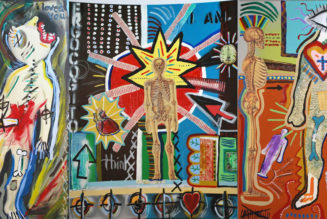by Susan Norsigian, LCPC
Art therapy is extremely adaptable as a tool in counseling. This article is devoted to the use of art therapy, with any age client. Some might assume it is only helpful for children, and it is an extremely valuable tool for children as their verbal and intellectual skills are being formed. However, I use art therapy with adult clients and with myself as often as I can. The act of drawing, painting, building, sculpting, or whatever visual medium one uses, activates the right side of the brain, which is the nonverbal and emotional side of the brain. If a client is working through an issue, asking him to draw or paint about it can help in the process of tapping further into those emotions, and even finding out new things about his feelings. An example I can give from my own experience is a time when I was facing a biopsy after a mammogram found suspicious calcifications. I was with a therapist and she handed me some markers. I started drawing a self-portrait, showed it to her when I had finished and went on home. When I got home, I looked at the drawing and saw as plain as day that it looked like my hair was falling out. I hadn’t even noticed it when I was drawing. It helped me realize and face my fear that I might indeed have to have treatment and lose my hair.
Another young adult client was helped when she made a visual timeline of her life, using color coding and symbols. She was able to see patterns in her behavior over the years and connect them back to childhood experiences, The example I gave you of my own drawing was almost purely emotion-driven, while the second example utilized Cognitive-Behavioral Therapy, or CBT, in addition to the creation of images and emotional processing.
Children naturally express their feelings when making art, one example being a young girl I worked with whose father had died. She drew herself and her mother on one side of a Christmas tree, and her father on the other side. Children often use natural divisions to express loss, such as something or someone gone or separated from them. Symbolism in drawing can be a powerful force on its own sometimes, without necessarily verbalizing. One of my instructors presented a case study to the class about a teenage girl who struggled with negative behaviors, self-esteem and a general lack of direction. She ended up making a large drawing of herself bursting through the paper, and without discussing it, her behavior markedly changed for the better after that drawing.
I use art-making to help children express their feelings by making drawings or paintings that are “mad, sad, happy, afraid, etc.” where I encourage them to put their emotions on the paper in the form of colors and shapes. I also use art to help children work toward goals of behavior change, by asking them to draw or paint (sculpture would work as well) themselves engaging in a different, more helpful or positive behavior. Making something with her hands can help a child who is having difficulty verbalizing to have a “starting point.” The drawing or painting or play-doh sculpture then becomes the focus to be talked about, and that can help a very shy or resistant child not feel the pressure of direct questions, which can be very intimidating to some.
The goal of therapy is to form a “therapeutic alliance,” and art therapy can help make this happen.
Susan Norsigian is a Licensed Clinical Professional Counselor in private practice in the StL Metro area.
She can be reached at 618-223-4502 / snorsigian@gmail.com.









